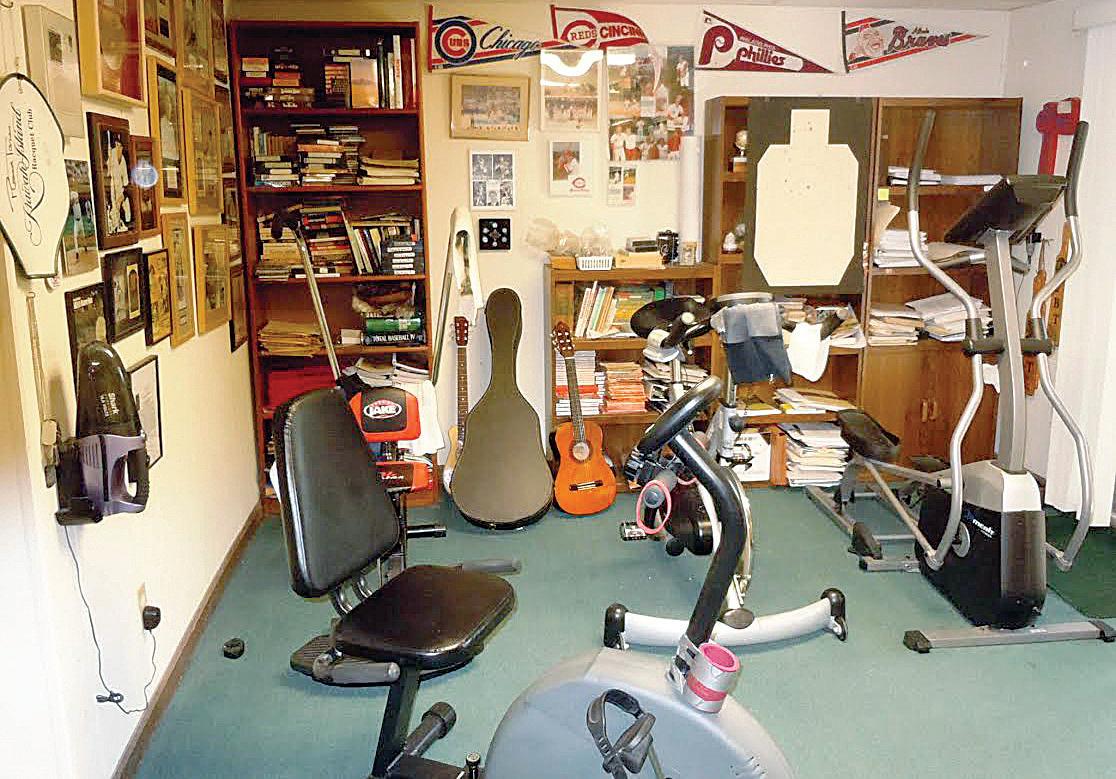
7 minute read
Don’t Be in denial — Get Organized!
from Atlanta Senior Life - October 2017
by Rough Draft Atlanta: Atlanta Intown, Reporter Newspapers, Georgia Voice

By Donna Williams Lewis
The hardest thing to give up was his baseball collection.
Brandt Ross doesn’t just love baseball. He’s consumed with the science of baseball. Over 65 years, he amassed more than 500 baseball statistical books, some more than 100 years old.
The books were part of his baseball menagerie of signed photos and balls, magazines and autographs. He even had baseball gloves from his childhood.
Three years ago, a collector drove to Brandt’s home, filled his SUV with all but “one shelf” of the entire collection, and headed back to Michigan.
“I sold it to him for a pittance,” Brandt said. There was no hint of regret in his voice.
Brandt, 80, and his wife Ginny, 84, had decided they wanted to be proactive about their futures, and a big part of that, for them, would be downsizing their lives.
“You have to reach the point where you say, ‘It’s just stuff,’” Brandt said.
Today, the retired CEO is rallying other seniors to liberate themselves from their “stuff” through a program he created called S.I.D., or “Seniors in Denial.”
As people age, “there is no shortage of things that can go wrong. The real question is who’s going to determine your destiny,” Brandt said. “It makes me sad to see people who lived good lives turning themselves over to their children.”
S.I.D. is the story of Brandt and Ginny’s October 2014 move from a 2,800-square-foot, three-story condo in North Buckhead to a 1,200-square-foot apartment about two miles away—a move made “when we wanted to,” he said, and not “when we had to.”
Brandt wanted a smaller place—they had nine rooms, but five of them were used for storage—and he’s big on socialization. After convincing Ginny that she wasn’t “moving to an old folks’ home,” they settled on the Renaissance on Peachtree senior living residence.
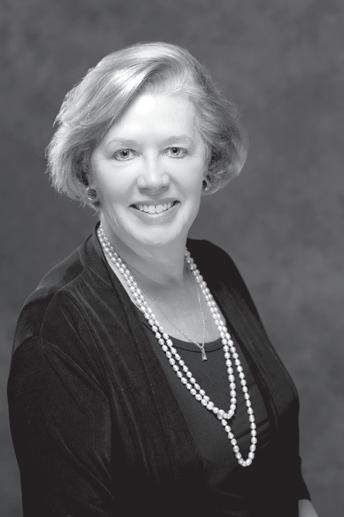

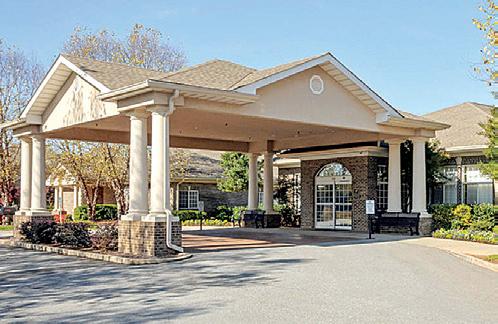


Over the four-month process from planning to moving, they shed about three-fourths of their possessions, Brandt said. “I was finally committed that I wasn’t going to leave this to our kids to do,” he said.
For 10 years before, Brandt and Ginny had been peeling off their more valuable possessions by giving their kids family heirlooms, formal furniture, silverware and other hand-me-downs for wedding anniversary presents.
“Instead of sitting around with this 12-place setting of china that nobody’s going to use, give it to your kids and let them decide what to do with it,” Brandt tells any senior who will listen.
He has devoted himself to turning S.I.D.’s into S.I.R.’s, or “Seniors in Recovery.” Brandt’s 40-minute S.I.D. presentation hits topics from deciding how and where to live out retirement years to streamlining possessions and selling the house.
His get-tough-on-stuff message is spiced with personal examples and softened with musical interludes. A folk singer, he wrote some of the songs he weaves throughout his programs.
Most of Brandt's volunteer teaching revolves around history, another of his passions. He is currently teaching a series of music-infused history classes called “Game-Changers” for Dunwoody-based Perimeter Adults Learning & Services (PALS). He has also taught classes for the Osher Lifelong Learning Institute (OLLI) programs at Emory University and Kennesaw
State University, Seniors Enriched Living (SEL) in Roswell, Senior University of Greater Atlanta (SUGA) and for Enrichment of Life Movement (ELM) in Marietta.

Brandt said he presents about 10 programs every month, even when he and Ginny take a trip. Before they leave, he calls senior residences at his destinations to offer to do a program. He made several presentations at the Bishop Gadsden retirement community in Charleston, S.C., while visiting there in August.
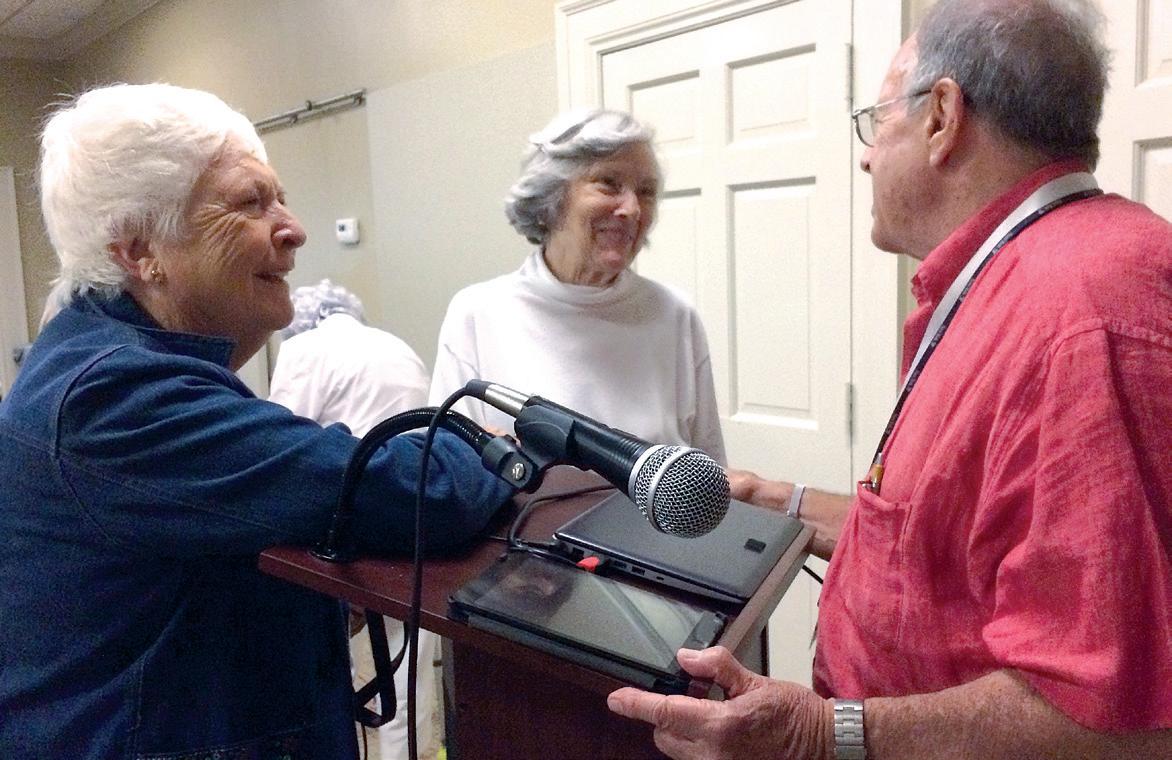
How does Ginny feel about this?
“She’s my best critic,” Brandt said. “She loves meeting the people and assessing my work.”
Eleni Nega, who works in community outreach at the Renaissance on Peachtree, began promoting the S.I.D. program around town after the first time she watched it with some of her colleagues. “We thought it was just so wonderful and so forward-thinking to do what he and his wife did,” she said. “We’ve seen very negative impacts of not being prepared.”
Brandt stays determined to spread his gospel, despite the deaf ears he said it tends to fall on. “My victories are small ones,” he said.
“Getting someone to clean their closet, a garage. Senior denial is almost incurable, but we do what we can.”
Last year, Brandt and Ginny visited friends who live in a “huge” ranch house with four cars. Both of their friends have serious health issues.
“I took him and his wife through the S.I.D. presentation and she said she wanted to sell everything and move into a senior residence near their kids,” Brandt said. “He was adamant in preserving his connection with his ‘stuff.’” Brandt and Ginny made their connection when he was a University of Chicago student, selling cookware doorto-door at night. Ginny, then a graduate nursing student, nixed the cookware but was sold on the salesman. They’ve been married for 58 years.
Continued on page 16
Continued from page 15
Brandt retired in 2015 after 22 years as president of a men’s apparel company in West Virginia, eight years of doing business “turnarounds,” and then moving to Atlanta and working in mergers and acquisitions for 20 years. Ginny retired in 2007 from operating room nursing at DeKalb Medical Center.
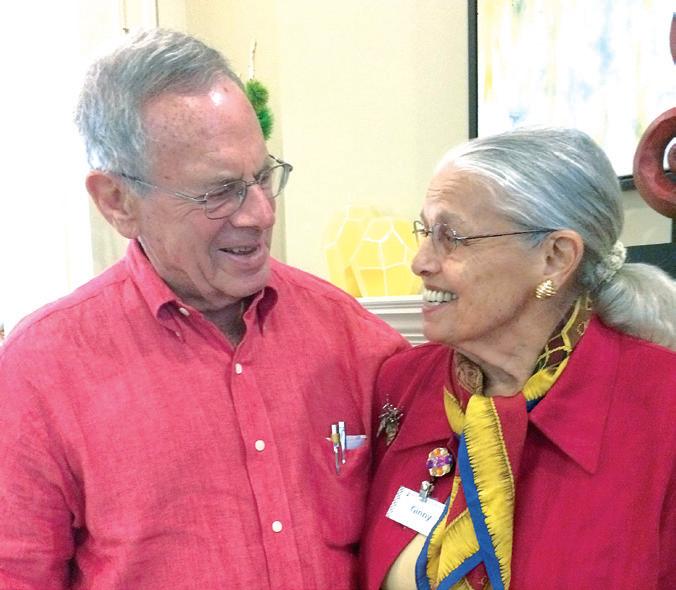
Brandt applied his CEO skills to their 2014 move, making a master plan with incremental finish dates.
He and Ginny used Skype to offer household goods to their three married children. They created an advance plan for handling conflict: If more than one of their kids wanted an item, the oldest would prevail.
Brandt bought red, yellow and green labels for tagging everything, as in everything. “My first rule of thumb was if you haven’t used it in a year or two, you don’t need it,” he said.
Red tags were for sale or donation; green, for take with; and yellow, for the kids’ selections, which they were given one month to pick up.
“If they didn’t get their stuff,” Brandt said, “yellow became red.”
A mobile shredding service chewed up 10 years' worth of tax and business records contained in 30 storage boxes. Both of their daughters-in-law loved much of their artwork. “It’s so nice to see it in their homes,” Ginny said.
They believe they parted with well over 1,000 books, most of which were donated.
An avid arts and crafter, Ginny had long been making collages out of loose family pictures. Before the move, she put the remaining pictures in boxes labeled for the people pictured in them.
An estate sale company handled their sale, putting on consignment or donating everything that didn’t sell.
Brandt says he and Ginny still have too many things, “but we are constantly aware of ‘not bringing in without taking something out.’”
“What we have learned, though, is that life is really about family and friends,” he said. “Everything else is just stuff.”
Here are some other local resources to help you get organized:

• Finders Keepers Consignment Stores — Finders Keepers hosts a series of Saturday morning workshops led by professional organizers each year in January, in Decatur. Cost: One canned good or $1 for the Atlanta Food Bank. Info: fkconsign.com.
• Time Space Organization — Professional organizers Diane Quintana and Jonda Beattie present hour-long workshops “Paper Piles to Files” and “The 411 on Hoarding” in early 2018 in Marietta. Cost: $20. Info: timespaceorg.com.
• People Pleasers — Downsizing and organizing experts Peggy Slotin and Alice Sanders specialize in helping seniors who need to move, from helping them decide what to keep to packing and unpacking their belongings and setting up their new surroundings. Info: downsizeexperts.com.
Fruit Infused Water: Not Just for Summer
This summer, I carried a water bottle with me everywhere, just to prevent dehydration. Now that the hot days are cooling down, it’s easy to forget that we still need to be drinking water—13 cups for the average man and 9 cups for the average woman, according to the Mayo Clinic. No matter the season, the average human body is around 50 percent water and not drinking enough water can be detrimental to our health. Water helps many parts of the body perform more efficiently by:
• Regulating body temperature
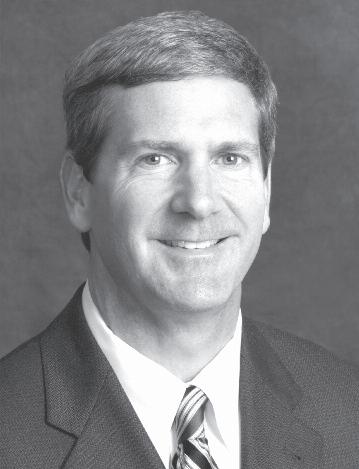
• Assisting in the transportation of oxygen and nutrients
• Removing waste and toxins
• Protecting joints and organs
• Managing body weight
• Relieving headache symptoms
This past summer, you may have made infused water to stay hydrated and cool. Growing in popularity, this beverage is popping up at farmers markets, restaurants and parties. Infusing water with citrus fruits, berries and herbs is not only more enjoyable for the taste buds, but it smells and looks wonderful.

I’ve always thought of infused water as a summer drink, but changing the infusion recipes to ‘apple cinnamon’ or ‘cranberry orange’ can create flavorful water that you can still enjoy during the fall months so you don’t get disinterested in plain water.
If you’ve never made fruit infused water before, it’s easy!
• Wash all your fruits and herbs before adding them to the pitcher.
You can follow a recipe or create your own combinations.
• Any type of pitcher or large Mason jar will work to infuse the water. If you want to avoid drinking any fruit particles, a fruit infused pitcher or water bottle would be best.
• Infuse your water in the fridge anywhere from 3 to 12 hours, depending on how strong you like the flavor.
• Keep the infused water refrigerated to prevent the produce from spoiling.
• Certain ingredients like lemon and basil may not last very long or may cause the water to taste bitter. A good rule of thumb is to prepare the amount of water that you’ll drink within three days. Grab some herbs from your garden and get creative this fall. Your body will thank you!
Cranberry Orange Infused Water
Makes 5 servings
Ingredients
• 1 orange, sliced thin
• ½ cup fresh or frozen cranberries
• Filtered water
• Mint, optional
Directions
1. Rinse cranberries and thoroughly scrub the orange with cold water.
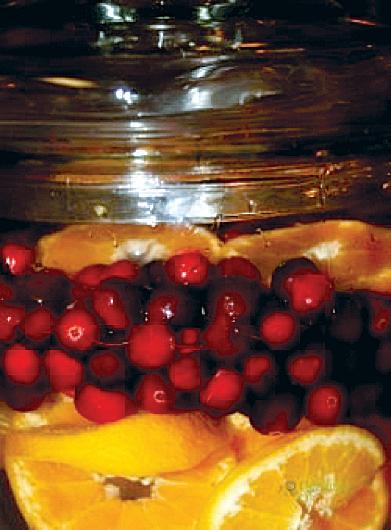
2. Slice oranges.
3. Place orange slices and cranberries in a pitcher.
4. Fill with water (tap, filtered or sparkling).
5. Let sit for 3 to 4 hours or overnight to allow flavors to permeate the water.
6. Drink within 3 days. Enjoy!
Recipe taken from sproutedroots.com and adapted by UGA Extension Fulton County.










